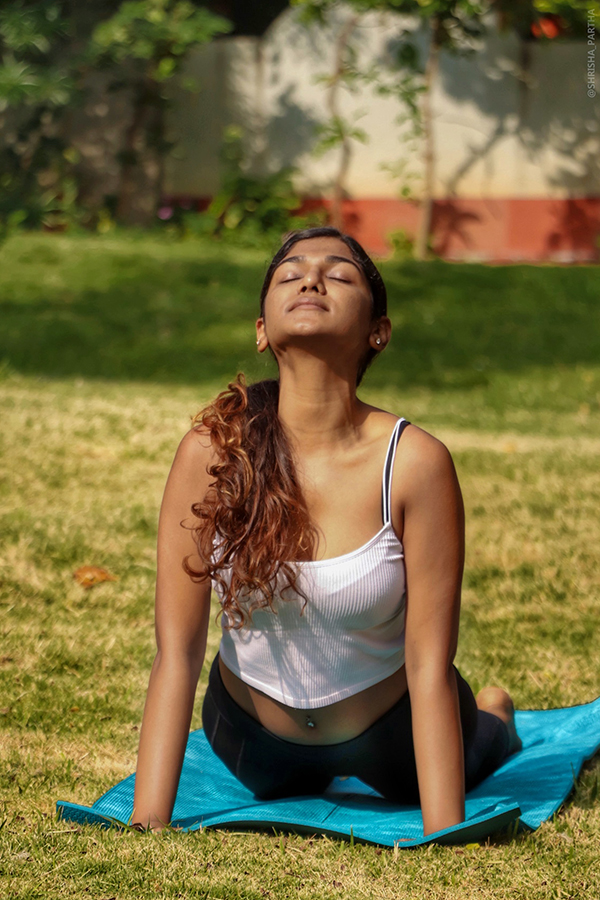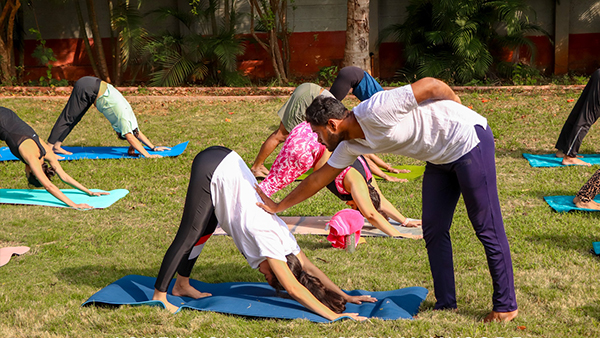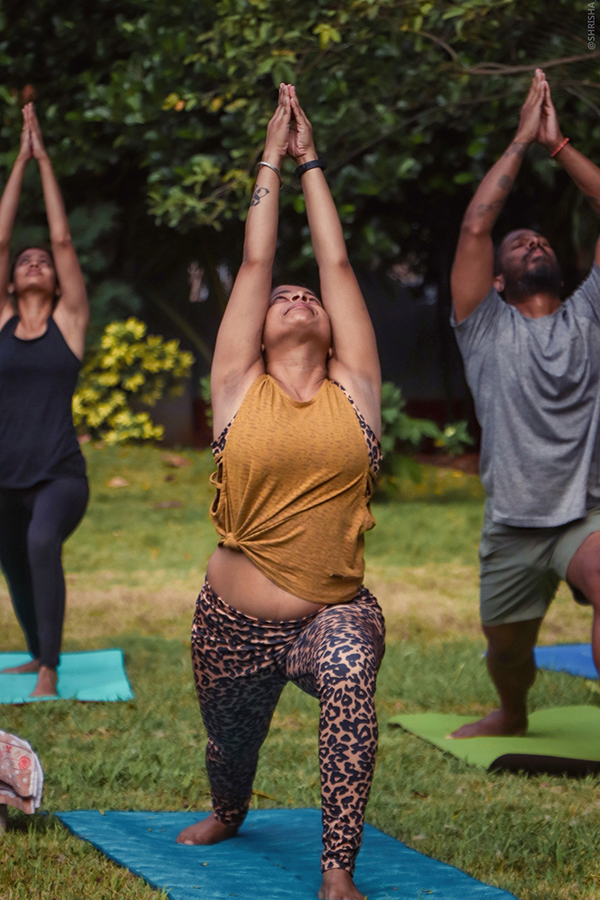Course Description
Our Teacher Training Course is offered by a team of experienced teachers and exponential yoga gurus. The 200 hoursAshtanga Vinyasa Yoga Teacher Training Course (TTC) is limited to 10 people and it is offered by a team of experienced teachers. This is a comprehensive Yoga Instructor training program, designed in a line with the 200 Hour requirements for registration with Yoga Alliance.course is designed in such a way that one who complete would be a certified yoga instructor eligible to register with Yoga Alliance and making qualifiying to teach Ashtanga Yoga across the globe.
Ashtanga Vinyasa Primary Series (also known as the First Series or Yoga Chikitsa), literally means yoga therapy. This when practiced regularly heals all sickness and purifies your body in preparation for deeper Yogic practice – both physical as well as meditative.
The modules taught meet and exceed yoga alliance requirements. Our comprehensive course schedule includes Asanas, Asanas Methodology (Adjustments & Theory), Pranayama and Meditation, Yoga Philosophy, Anatomy, Ayurveda and more.
The Pranayama classes cover various techniques like Kapalbhati, Bhastrika, Shithali, Shithkari and Bhramari
“Mysore Style” is practiced on Saturdays where students get a chance to improve their practice without the teacher leading them but the teacher will be present to adjust the postures if necessary.
It is an extreme experience that helps to develop a firm foundation of interior discipline. The eligibility for this course is a sincere desire to learn and discipline to attend all the classes. 3months of recent yoga practice in Ashtanga Yoga or Hatha Yoga is a essential.
- SUN SALUTATION A 9 Steps
- SUN SALUTATION B 17 Steps
- STANDING POSTURES
- Padangusthasana
- Pada Hastasana
- Utthita Trikonasana A, B
- Utthita Parsvakonasana A,B
- Prasarita Padottanasana A,B,C,D
- Parsvottonasana
- Utthita Hasta Padangusthasana
- Ardha Baddha Padmottanasana
- Utkatasana
- Virabhadrasana I
- Virabhadrasana II
- SITTING POSTURES
- Dandasana
- Paschimottanasana A,B,C
- Purvottasana
- Ardha Baddha Padma Paschimottanasana
- Trianga Mukaikapada Paschimottanasana
- Janu Sisrasana A,B,C
- Marichyasana A,B,C,D
- Paripurna Navasana
- Bhujapidasana
- Kurmasana
- Supta Kurmasana
- Garbha Pindasana
- Kukkutasana
- Baddha Konasana A,B
- Upavista Konasana A,B
- Supta Konasana
- Supta Padangustasana
- Ubhaya Padangustasana
- Urdvha Mukha Paschimottanasana
- Setu Bandhasana
- Urdvha Dhanurasana
- Paschimottanasana
- Shavasana
- FINISHING POSTURES
- Salamba Sarvangasana
- Halasana
- Karnapidasana
- Urdvha Padmasana
- Pindasana
- Matsyasana
- Uttana Padasana
- Urdhva Dandasana
- Sirsasana”
- CLOSING POSTURES
- Balasana
- Yoga Mudrasana
- Padmasana
- Tolasana
- Shavasana”
Recommended books for reading
- Yoga Mala – Sri Pattabhi Jois.
- Light on Yoga – BKS Iyengar.
- Asana, pranayama, Mudra, Bandha – Swami Satyananda Saraswati.
- Yoga Anatomy – Leslie Kaminoff.
- The Powe of Ashtanga Yoga – Kino macgregor
- The Original Yoga – Shyam Ghosh.
This course includes:
- Training and Certification. Worldwide recognized RYT-200 certificate which can be used to register with Yoga Alliance.
- Satvik – Vegetarian (Breakfast Lunch and Dinner).
- Accommodation – The accommodation is on twin sharing basis.
- Course Manuals.
- Chamundeshwari hill / Elephant national park/ Birds Sanctuary-Temples visit.
Organized day trips (Optional-Paid visit)..
FREE COURSE
AquaYoga
Aqua yoga is a type of yoga in which the asanas are performed in water. This can be a warm water pool or more natural, open water such as the sea. It is a gentle and low impact activity and, as such, may be more accessible to those who struggle with physical exercise.
Aqua yoga adapts the postures and principles of yoga, including breathing and mindfulness, to an aquatic environment. It is said to be a particularly relaxing, soothing and restorative form of yoga due to the effect on the body of being in water.
Aqua Yoga Benefits
Physically, Aqua yoga is said to be helpful in a number of ways as it: Stimulates the lymphatic system; Strengthens the whole body; and Improves range of motion and flexibility.
Basic Sanskrit Learning
Introduction to Sanskrit language
Sanskrit Scripts – Knowing Varna, Writing and correct pronunciation of Devanagari and Roman Dicritical alphabates
Sanskrit Varnamala (Alphabets) – Its logic, knowing Vedic and Laukika Sanskrit varna, their spiritual meanings and effects, origin and types
Sanskrit Pada (Words) – Types – Shabdarupa, Dhaturupa (Introduction to various pada formats).
Structure – Prakriti, Pratyaya, their types and meanings.
Introduction to Sanskrit Etymology. Formation of new Pada
Mantra/Shloka Chanting will be a compulsory part of all classes
| DAILY SCHEDULE | MONDAY – FRIDAY |
| 6:00 – 6:30 | Meditation |
| 6:30 – 8:00 | Ashtanga Practice |
| 8:00 – 8:30 | Rest |
| 8:30 – 9:30 | Pranyama |
| 9:30 – 11:00 | Break and Break fast |
| 11:00 – 12:00 | Theory |
| 12:00 – 1:00 | Vinyasa Counting / Teaching Methodologies |
| 1:00 – 2:00 | ( Aqua yoga ) 2 days ( Sanskrit Learning ) 3 days |
| 2:00 – 4:30 | Lunch / Rest |
| 4:30 – 5:45 | Yoga alignment & teaching techniques |
| 6:00 – 7:00 | Self rivision |
| 7:30 | Dinner |
| DAILY SCHEDULE | SATURDAY |
| 07.30 – 09.30 | Ashtanga Vinyasa Practice / Aqua Yoga |
| 10.00 – 11.00 | Different school of meditation |





